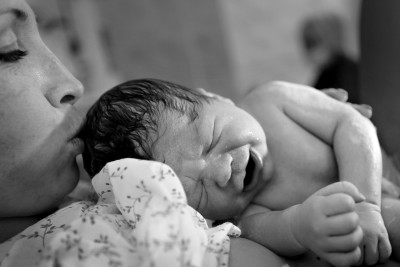
Discussing a birth plan with your midwife gives you the chance to ask questions and find out more about what happens in labour. It also gives your midwife the chance to get to know you better and understand your feelings and priorities — this will form part of your personalised care and support plan.
Be prepared to be flexible and to do things differently from your birth plan if complications arise. You can change your mind about your wishes for labour and birth at any time.
Everyone's labour is different, and how you’ll feel in early labour depends on whether you’ve had a baby before and how you perceive and cope with labour.
- Persistent lower back or abdominal pain, often accompanied by a cramp pain similar to when you have a period.
- A show (a brownish or blood-tinged sticky, mucus discharge). Labour may not be imminent, but it is a sign things are moving along. You should carry on as normal.
- Painful contractions that occur at regular and increasingly shorter intervals and become longer in duration and stronger in intensity.
- Broken waters (continually leaking fluid from your vagina that you’re unable to control).
You’ve probably talked with your midwife about what to do when you think you’re in labour. If you’re not sure whether or not the time has come, please contact us.
When you call us, we’ll listen to you and plan your care together. We’ll also want to know how close together your contractions are, how long they last and any other symptoms or concerns you may have, including how much your baby is moving.
If you're planning to have your baby in hospital, we may ask you to come in so that we can assess your progress or suggest you remain at home if we think you’re still in early labour.
If, when you come in, you’re still in early labour, we may encourage you to go home again until you're in active labour. This is because there’s evidence to suggest that being at home is the best place to be during early labour — at home, you are calm and relaxed and therefore more likely to avoid unnecessary intervention.
You should contact us if:
- Your waters break, or if you suspect you're leaking amniotic fluid
- Your baby is moving less than usual
- You have vaginal bleeding
- You have a fever, severe headaches, changes in your vision, or abdominal pain
- You’re worried or concerned
When preparing to come to our birth centre or delivery suite for the birth of your baby, please bring sufficient clothes and personal items for the period following the birth of your baby. This could be anything from six hours to two days.
What to bring for you
- Your maternity notes
- Comfortable, loose clothing to wear while giving birth
- Night wear and slippers
- Comfortable, loose clothing to wear when you go home
- Toiletries
- Personal items which may include music, massage oils, a pillow, water spray, lip salve, phone charger, eye mask, a handheld fan
- Healthy snacks and isotonic drinks; a water bottle
- Breast pads and maternity pads; disposable underwear
- Support bra to wear while breastfeeding
What to bring for your baby
- Clothing (including vests, baby grows and hats)
- Nappies
- Cotton wool
- Baby blanket
- Car seat to go home in
- Snowsuit if the weather is cold